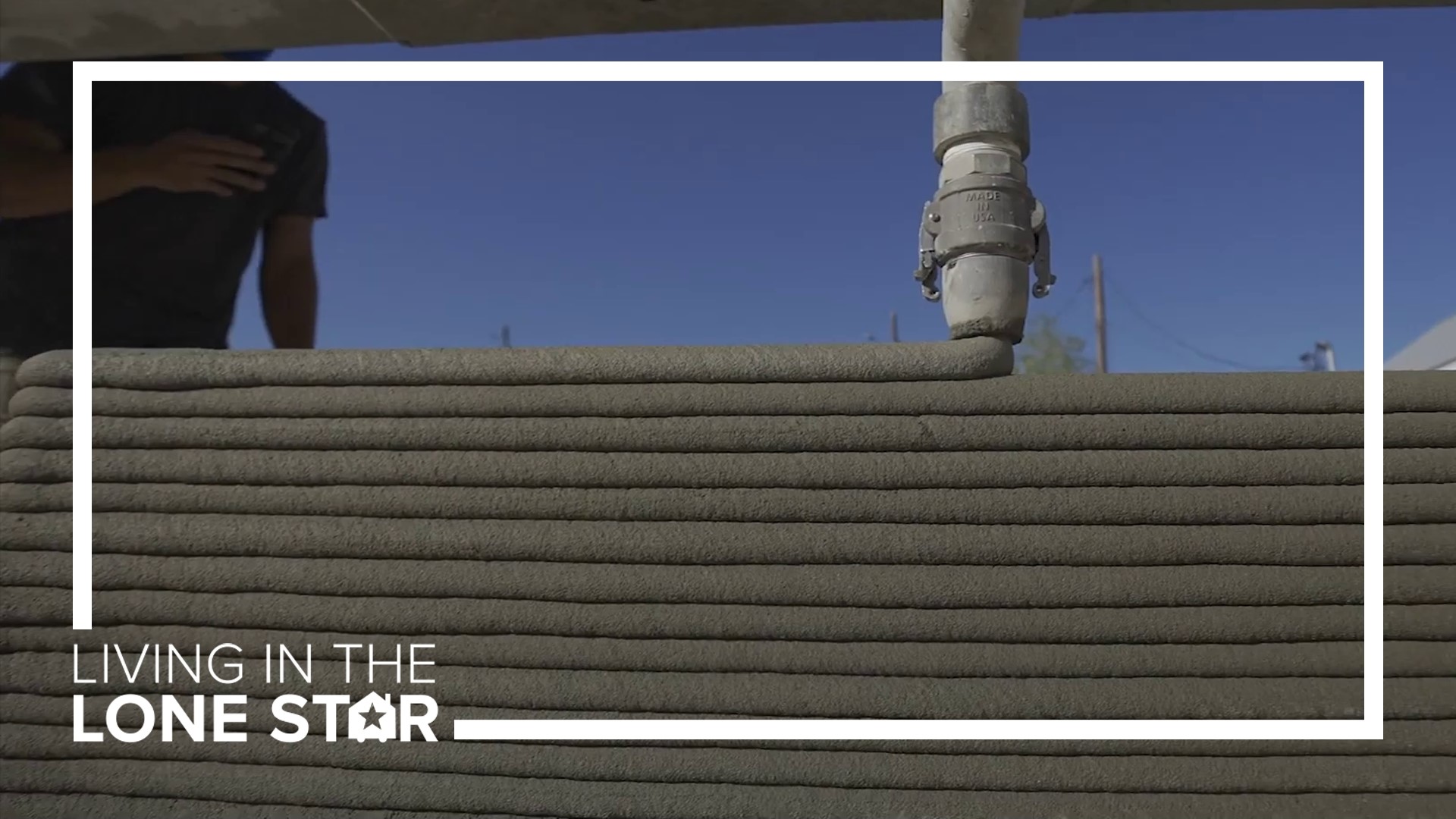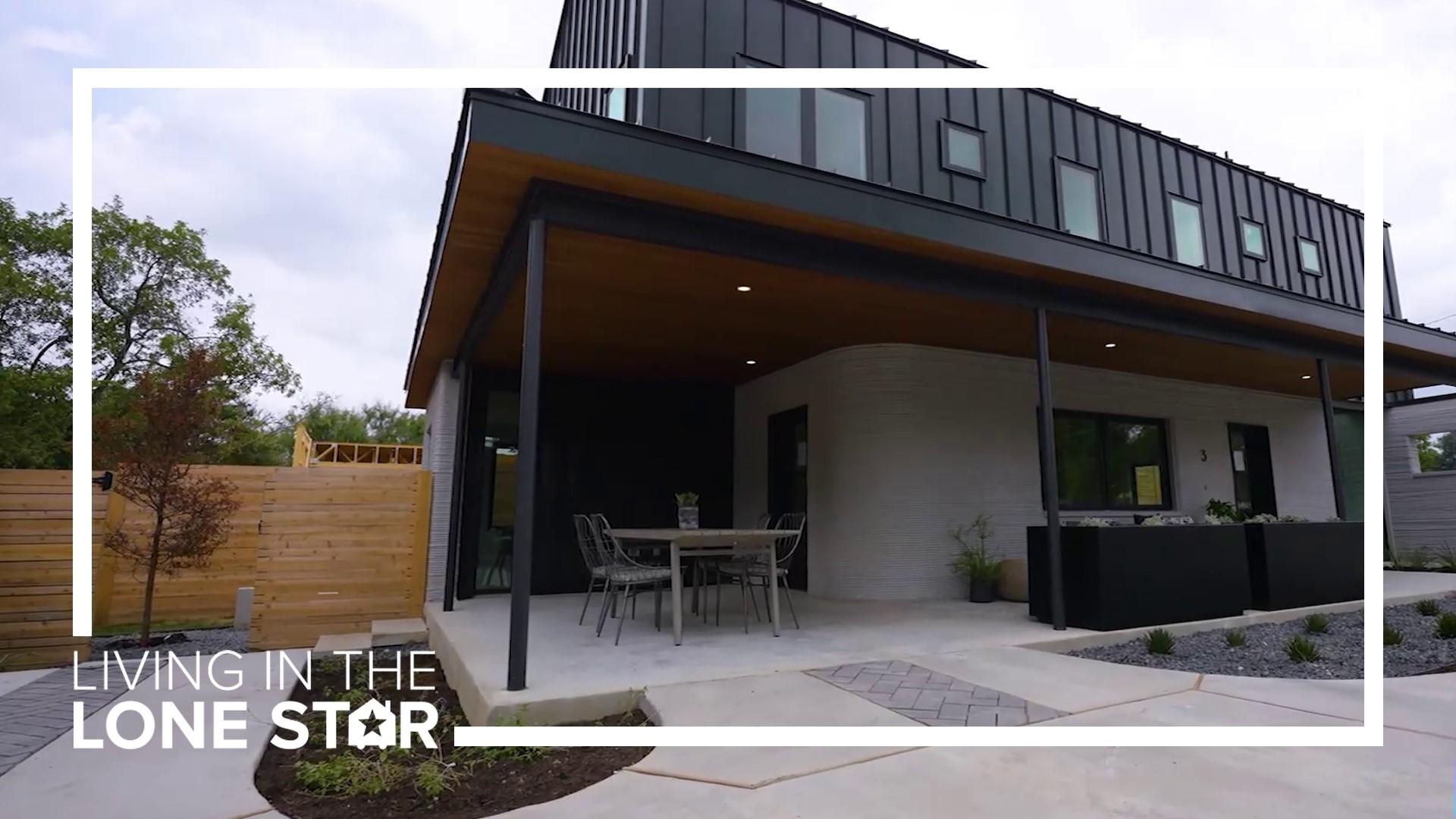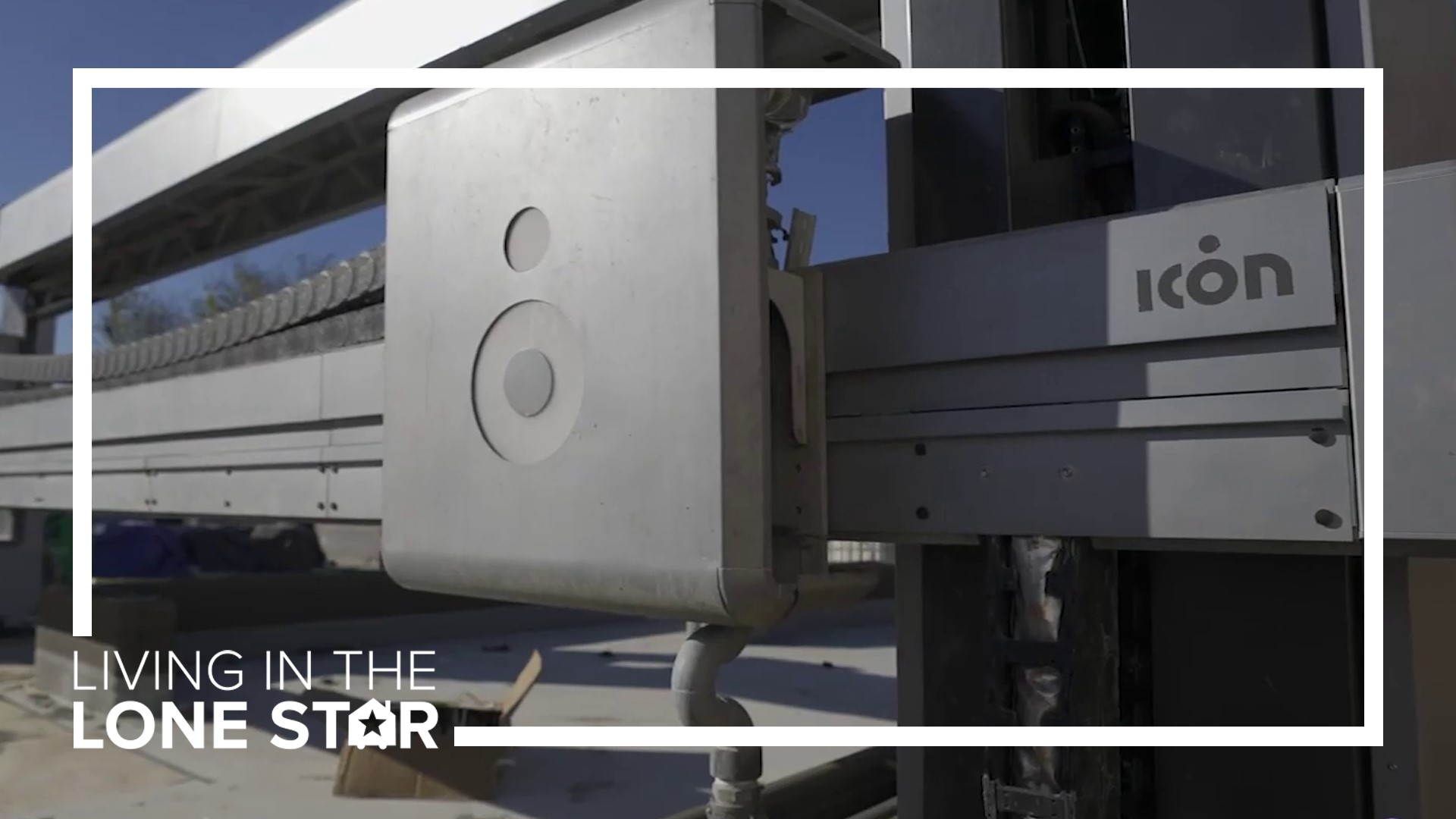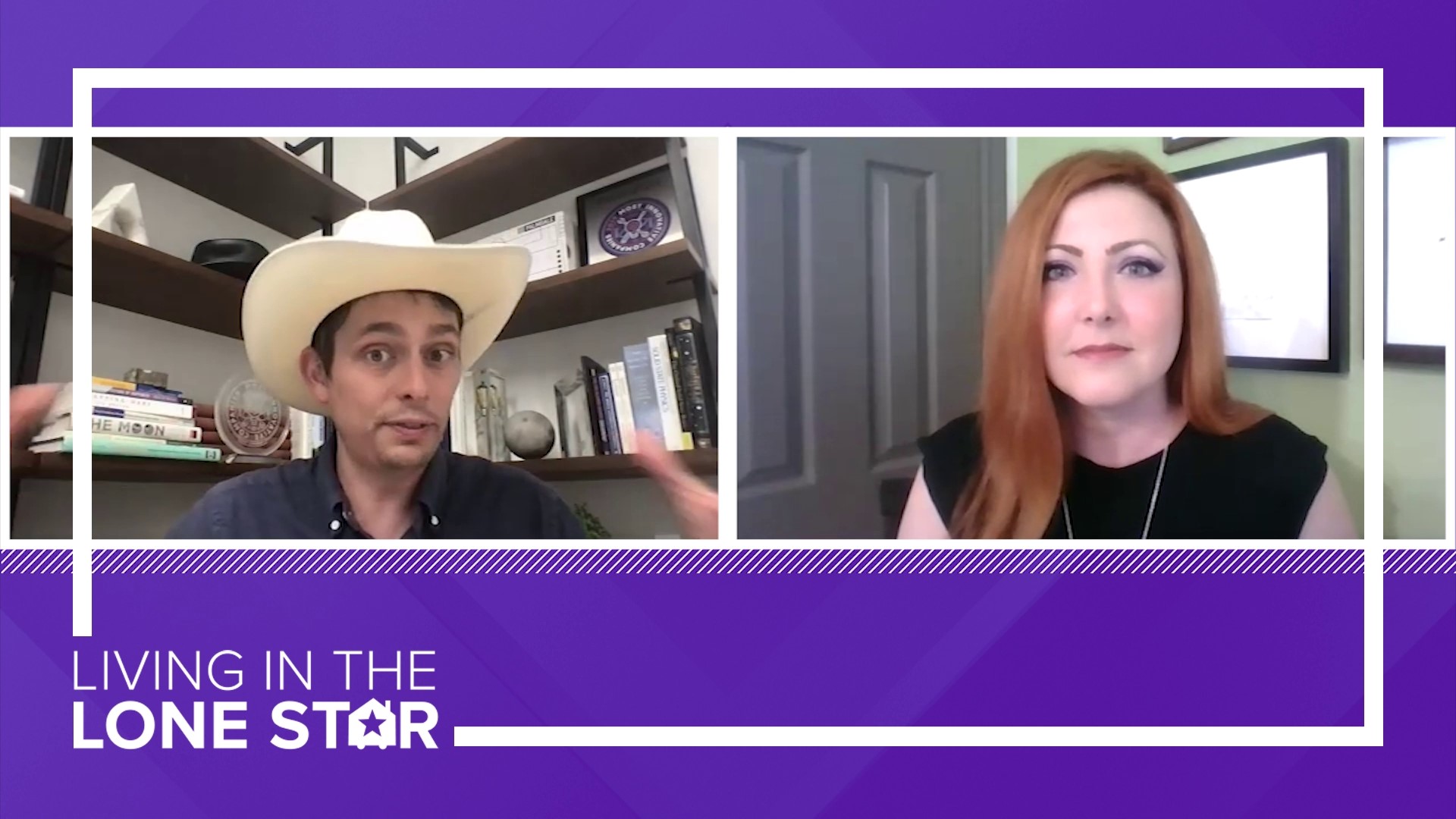‘The future is faster than you think’ | Texas company breaks new ground with 3D-printed homes
ICON built the first permitted 3D-printed home in 2018. Now it’s working with NASA to put man on Mars.
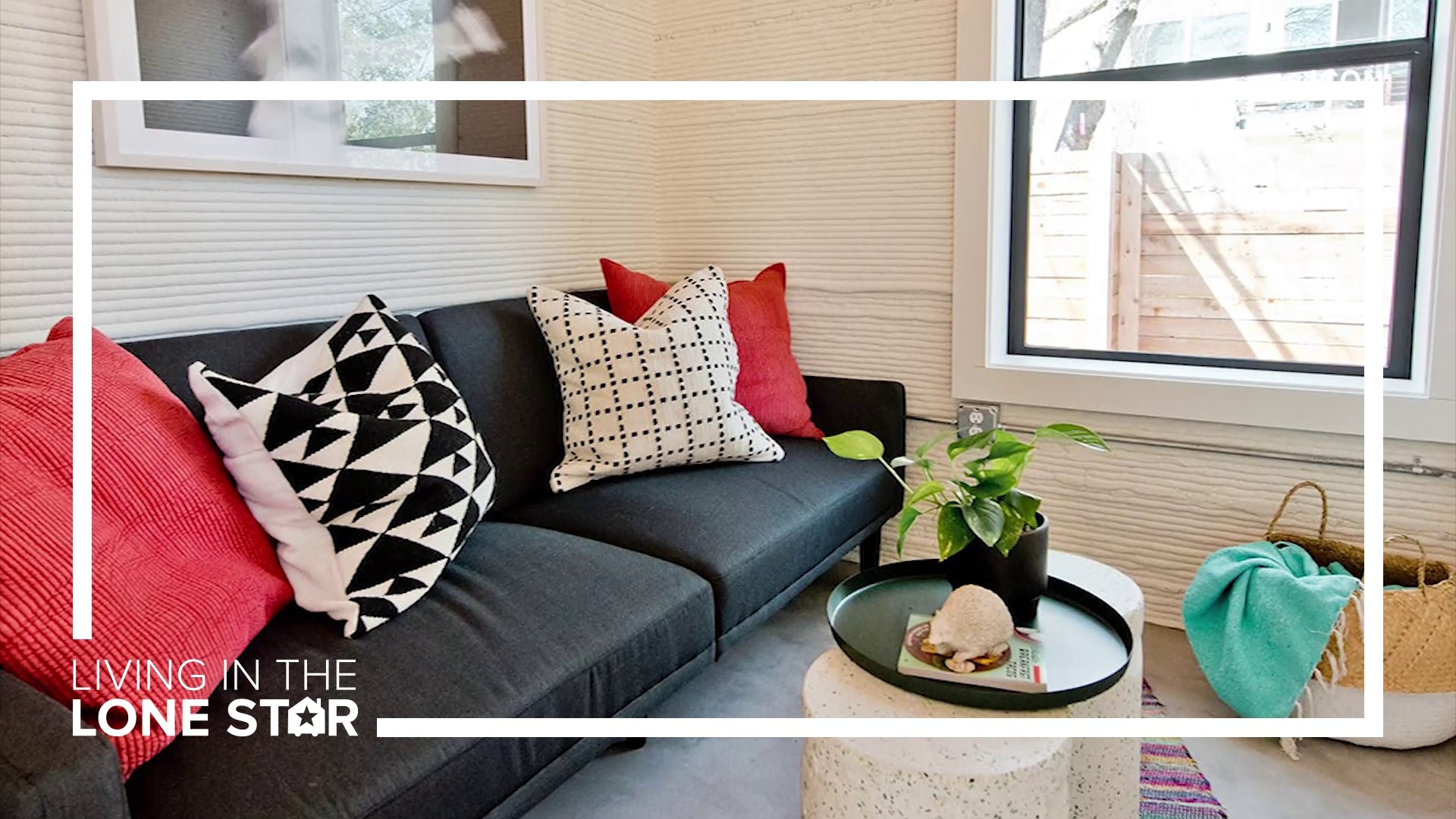
At first glance, the cluster of homes along East 17th Street in Austin blends in with the neighborhood around it. But these houses are built to stand out, stand up and stand firm.
"We print the entire wall system," explains Jason Ballard, co-owner and CEO of Austin-based ICON.
Print -- as in 3D print using concrete and a massive robot.
"What we're replacing with our automation is framing, interior finishing surface, exterior finishing surface," Ballard says. "You don't necessarily even need to paint it. We do plumbing, electrical, or rough-ins are delivered with the wall system."
'A better outcome'
ICON famously constructed the US’s first permitted 3D-printed home in Austin back in 2018. That was the fulfillment of an idea Ballard had been working on since he was a kid.
"I grew up in the Texas Gulf Coast. My childhood home is gone. My family has spent Christmas in a FEMA trailer," shares Ballard. "We kept rebuilding with stick frame houses and then the hurricanes and tropical storms would come again. It was sort of like the doom loop."
He knew then that stick-frame houses -- the same home construction we’ve used since the Middle Ages -- wasn’t enough.
"We've got to quit doing this if we want to have a better outcome," Ballard says.
After college graduation, he started his career in housing, logging time at a homeless shelter, then in sustainable housing.
"But [I] eventually realized that continuing to do things the same way was gonna continue to deliver similar results of the ones we're experiencing right now, which is we don't have enough houses, they're not affordable enough, they're not sustainable enough, they're not resilient enough," says Ballard.
The most promising prospect: robotic construction.
How is a 3D-printed home built?
ICON’s Vulcan robot can 3D print just about any design, but to capitalize on efficiency and cost-savings, thought has to be given to the design, according to Ballard.
"You have to design for 3D, because it really does start with the architecture and the design," he says. "A smaller house is cheaper than a big house. An open floor plan is cheaper than a complex, intricate floor plan."
Once the design’s set, the team at ICON prepares the build site, leveling the ground and pouring a concrete base. Then, just like a standard office 3D printer, a giant concrete printer adds layer after layer until the design becomes a house. Traditional fit and finish follow.
"3D printing is truly a revolution," says Ballard. "It's not a niche kind of product. It's an entirely new way of delivering houses at every price point in a more compelling way."
All of that is cool, but it has to be more than 'cool' if you’re going to live in it. Ballard says 3D-printed homes offer all sorts of perks.
"Number one: it is faster because it's a machine that can run 24 hours a day," Ballard says. "It doesn't need to take breaks, it's very quiet in its operation, so you can print around the clock with regard to noise ordinances."
That automation cuts down on labor and supply costs.
"With 3D printing, you get what you need to drop, then you stop," says Ballard. "That's cool -- not just because it rhymes -- because construction waste is a huge problem."
So are hurricanes and severe weather in Texas. Concrete homes can endure those conditions better than traditional homes.
"This kind of building method that is inherently resilient to hurricanes, wind, fire, termite, you sort of notice is inherently resilient material, creates really positive new opportunities for us to readdress the way that we're delivering houses in these kinds of areas," Ballard says.
On top of all that, he adds that 3D printing allows for projects to be scalable and affordable.
"It's a higher performing house," says Ballard. "So often to get something faster and cheaper, you have to reduce its quality. In this case, you're actually getting an improved quality, improved comfort, improved energy efficiency."
The build in 2018 was a proof of concept. The next commercial project, the East 17th Street Residences, went on the market in August and are already all sold. Now comes ICON's largest undertaking yet: a partnership with Lennar to build 100 3D-printed homes. The development is set to break ground early next year.
"It's just a very exciting, compelling and powerful new way forward," says Ballard.
From the Middle Ages to Mars
Beyond commercial projects, the company has also worked with a number of nonprofits to 3D print communities in Mexico and in Austin for families experiencing poverty and homelessness.
"We're excited to have the opportunity to try to do better than we've done in the past," Ballard says.
Instead, ICON’s focus is on the future. The company is helping NASA get to Mars by 3D printing a 1,700-square-foot Mars surface habitat at Johnson Space Center. It will serve as a home to volunteers living in a simulated environment to test what life is like on the red planet.
"We're trying to put this technology in service to humanity, to both solve some of our most profound problems, but also open up some of our grandest opportunities," says Ballard.
In a way, the challenges of Mother Nature provided the momentum to move from the Middle Ages to Mars.


